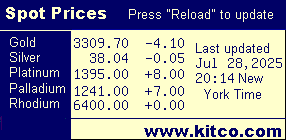Watch this clip - it sums up the essence of the problem at hand.
When Lehmans went bust in 2008 and the market crashed. The talking heads on TV were all coming out with their own complicated explanations about what had happened, this complexity (as we have talked about before) just obscured the basic fact which is - too much money was lent to too many people people who just could not pay it back and never could pay it back.
And when we talk about people what do we mean:
- Homebuyers,
- Credit Card Holders
- Companies
- Countries
- States,
- Local governments,
- Literally all sectors of life - all over the world
Why was this, don't banks have limits on what they can lend, aren't there rules and regulations to stop this happening? Once again the talking heads on TV will blind you with the science of Credit default swaps, CDOs and so forth. For a simpler answer lets go back to our model of chickens, potatoes and Bob the Banker.
Let's start by looking at how money was traditionally lent.
So lets say my chicken business is going really well and every month I deposit $1000 with Bob the Banker. Bob the Banker can then go and lend this money out to some of his customers. So then Tom is looking to borrow $500 to expand his wheel business so he goes to Bob and applies for a loan. Now Bob does not want to take huge risks he wont just lend to anyone. After all this is his bank's money, his job is on the line and he does not want to lose the money of his customers many of whom he knows personally.
Bob sits Tom down, checks out his history, has he been a good customer, has he repaid his debt on time. Is his business plan sound and so on, and only after serious scrutinization does Bob agree to lend the money. So Tom gets his loan, he has to pay it off in 3 years at 6% interest per year.
Bob the Banker Meets Willie Wall Street...
This was the way things worked for years and years until an investment banker (lets call him Willie Wall Street) arrived on the scene. Now Willie is a very intelligent guy with lots and lots of ways to make money, not only that he has lots of friends with loads of money to invest - everyone was going to be a winner!!!
So Willie says to Bob - instead of keeping that loan of $500 on your books, why don't you sell it to me. I will give you your original $500 back + $5 for your trouble. Bob loves this idea, he gets $5 up front and then has another $500 he can lend out to someone else
Willie then goes to his friends with this great investment offering 4%. They love this so everyone is a winner. Bob get 1% for setting up the deal, Willie's friends get 4% and Willie gets to keep 1% cut.
These investments become so popular that Willie is constantly on the phone to Bob trying to buy more loans from him and even tells him not to worry too much about who he is lending to because they have now got some highly complicated way to manage risk.
Also Willie's friends are just queuing up to get on board, so much so that some of them borrow money to buy these investments - they are such a sure thing.
Who are Willie's friends?
- insurance companies,
- banks,
- pension funds,
- mutual funds,
- investment funds
- from all over the world........
This principle of taking a loan and turning it into an investment and selling it to investors It was applied not only to the mortgage market but to:
- credit card debt,
- corporate loans,
- municipal loans
- and sovereign (national) loans.
he term for these investments is credit derivatives and this system of credit derivatives created a huge explosion in world wide debt and because the risk seemed to be dealt with somewhere else or through some complicated means large sums of money was lent to people, corporations and countries who normally would have been too much of a risk!!!!. Not only did the credit derivative market allow for anyone one to borrow money. It also made borrowing money that much cheaper.
In the summer of 2007 we saw the start of the problem in the Credit Crunch caused by the sub prime loan market - this was where mortgages were given to literally anyone who applied for them. As people started to be unable to pay back these loans it became obvious that these "investments" were bad and there was a mass exodus causing the bank lending system to freeze up. This sub prime market was $600 billion in size and it has essentially being the largest contributing factor to the collapse of many banks - Lehman, AIG, Morgan Stanley, Merrill Lynch and so on.
Considering that the total mortgage market in the USA alone is worth $8 trillion, add to that credit card debt, corporate loans big and small, national loans big and small you are looking at a total market size for credit derivatives of $65 trillion - this is the potential size of the problem.
To give a bit of perspective:
- The world economy produces roughly $55 trillion per year.
- If you sold everything in the world you would get roughly $600 trillion......
- This problem is potentially $65 trillion in size.
There are a couple of twists to this story compounding the problem further
- Some of Willie's friends borrowed money to so they could invest with Willie, these investments are now worth much less but Willie's friends still need to pay back the same amount. Woops!
- Because of regulations and risk appetite Some financial institutions were not allowed to or did not want to invest in some of the more riskier investments. To solve this problem another credit derivative was created - it was an insurance on the riskier investments. If the underlying borrower did not pay and the investment went sour the investor (apparently!) would be insured. This was great business and banks, hedge funds and many other institutions offered this insurance - what's more is was completely unregulated. It was great business as long as times were good, however when things started to go south and the investors wanted their insurance this created big problems and was actually the reason why AIG collapsed - we have not heard the end of this story by a long shot.
Further Deeper Collapses.......
Click here to go to The Causes of the Coming Financial Crisis
In Gold We Trust in an online Coin Bullion and Scrap Gold Calculator giving up to the minute Scrap Gold Prices, Values of Silver Dollars and other Junk Silver Coins










1 comments:
Get daily ideas and instructions for earning THOUSANDS OF DOLLARS per day FROM HOME for FREE.
JOIN FOR FREE
Post a Comment